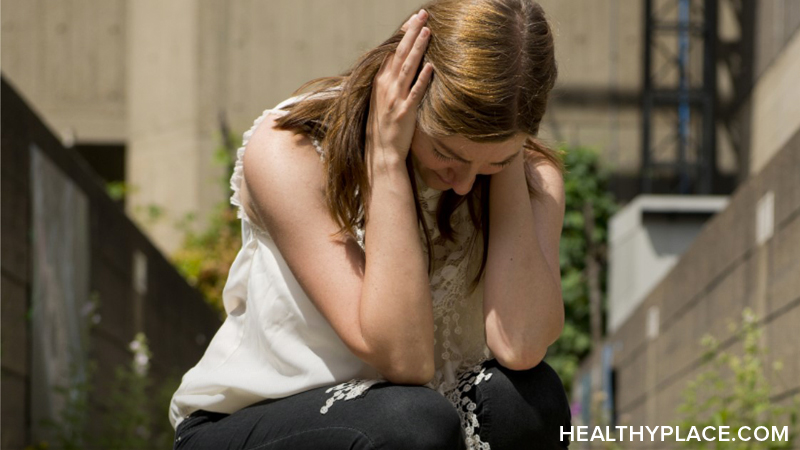PTSD in Rape and Abuse Victims

PTSD in rape and abuse victims is common. Rape and abuse are violent acts intentionally committed against a human being. These crimes violate the survivor’s sense of self and the world and shatter any sense of safety that once existed. The malevolent nature of these acts contributes to the development of PTSD in rape and abuse victims.
How Many Rape Victims Develop PTSD?
It is estimated that in the course of their lifetime, 13 percent of American women will be raped. (National Center for Victims of Crime, 1992; Kilpatrick, 2000). Regarding PTSD in these rape victims:
- Nearly all (about 94 percent) experience some PTSD symptoms in the first two weeks after the assault (National Center for PTSD, 2015).
- Almost a third of rape victims still have PTSD symptoms nine months later (National Center for PTSD, 2015).
- About a third of all rape victims (approximately 3.8 million women) will develop PTSD at some point during their lives (National Center for PTSD, 2015; National Center for Victims of Crime, 19992; Kilpatrick, 2000).
- About 11 percent of rape victims develop chronic PTSD.
PTSD in Rape Victims: Reactions and Symptoms
Rape-related PTSD (RR-PTSD) is not an official diagnosis, but it is a term that is often used to describe the reactions and symptoms of PTSD experienced by victims of rape. Among common RR-PTSD reactions are:
- Disorganization
- Shock and disbelief
- Physical health problems
- Lifestyle changes (avoidance, moving, leaving a job, etc.)
The National Center for Victims of Crime (1992) describes four major symptoms of RR-PTSD:
- Re-experiencing the trauma through intrusive thoughts, nightmares, flashbacks and upon being reminded of the event through triggers
- Withdrawal resulting from numbing (feeling no emotions of any kind and even feeling emotionally dead); loss of interest in life
- Avoidance of anything that reminds the person of the assault, including talking about it
- Heightened arousal, which involves jumpiness/startling easily, hypervigilant watchfulness for signs of danger, sleep problems, difficulty concentrating and remembering things, irritability, anger
Why PTSD Develops in Abuse Victims
PTSD is also common in abuse victims. Like rape, all types of abuse are violent and done on purpose. Abuse violates love, trust, and safety, and it threatens the victim’s physical health, mental health, emotional wellbeing, and even his/her very life.
PTSD in abuse victims can be particularly intense because of the nature of abuse.
- It’s typically repeated over time
- Because the abuse never goes away, neither does PTSD in abuse victims; the abused child or adult never has a break or a chance to begin to heal
- Abuse is committed by a parent, family member, spouse, etc. When someone who is supposed to be loving and protective instead becomes dangerously violent in words or actions, it’s frightening, confusing, and shatters one’s world.
Symptoms of PTSD in Abuse Victims
Abuse is all-encompassing, and PTSD in abuse victims negatively affects thoughts, feelings, and behaviors. Abuse and the resulting PTSD change the way people see the world and see themselves in that world.
PTSD symptoms in abuse victims involves:
- Intrusion symptoms; recurrent unwanted memories
- Avoidance; going through great lengths to avoid causing more abuse, and avoiding interacting with others so as not to give away the abuse
- Negative alterations in thoughts and mood; depression, anxiety, thoughts of suicide, feelings of shame, guilt, worthlessness, difficulty concentrating
- Arousal and reactivity; jumpiness, general anxiety, watching for signs and reactions in the abuser, and an inability to relax or even sleep
PTSD in Rape and Abuse Victims Can Be Overcome
The development of PTSD is a natural response to trauma such as rape and abuse, but it also can be a temporary one.
Rape crisis and trauma centers, as well as domestic violence shelters, are available in many communities. Online helplines exist to provide assistance to both rape and abuse victims. Support groups are great resources for people to share experiences and coping skills. Therapy, too, has been proven to be extremely effective in healing PTSD in rape and abuse victims.
The effects of PTSD in rape and abuse victims are profound, but with time, treatment, coping skills, and positive ways of dealing with it, PTSD doesn’t have to forever plague rape and abuse survivors.
APA Reference
Peterson, T.
(2021, December 24). PTSD in Rape and Abuse Victims, HealthyPlace. Retrieved
on 2026, January 10 from https://www.healthyplace.com/ptsd-and-stress-disorders/ptsd/ptsd-in-rape-and-abuse-victims



